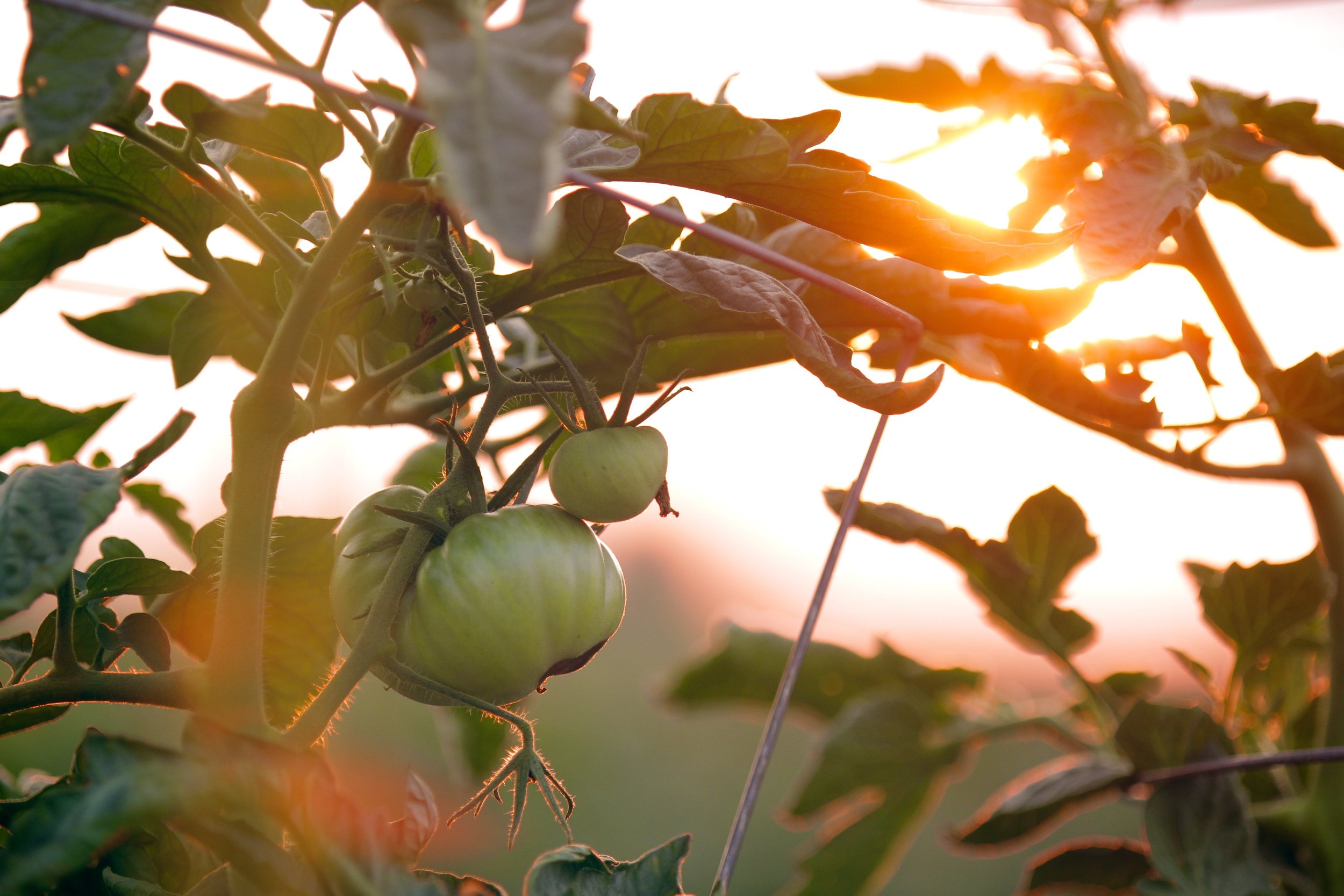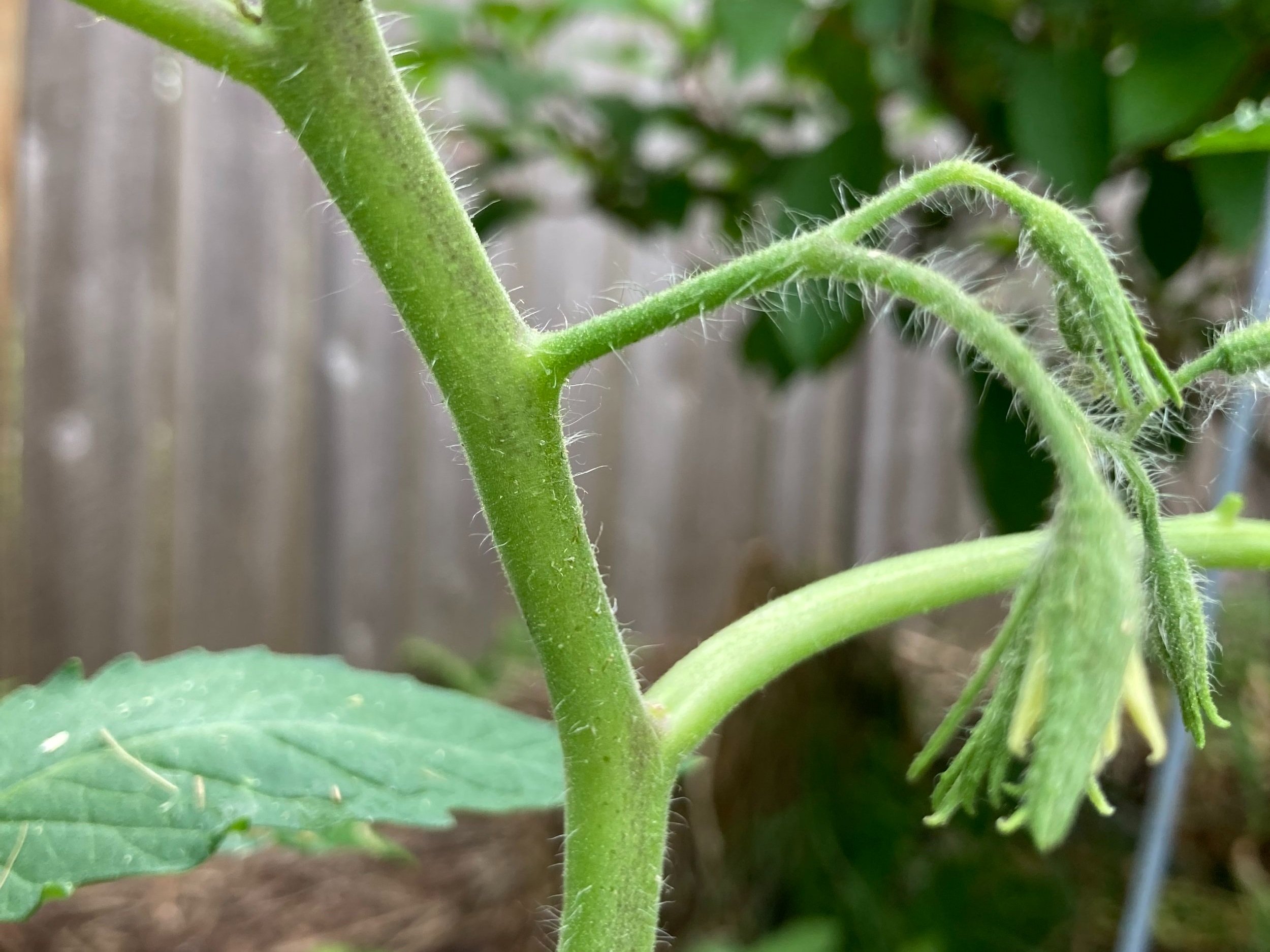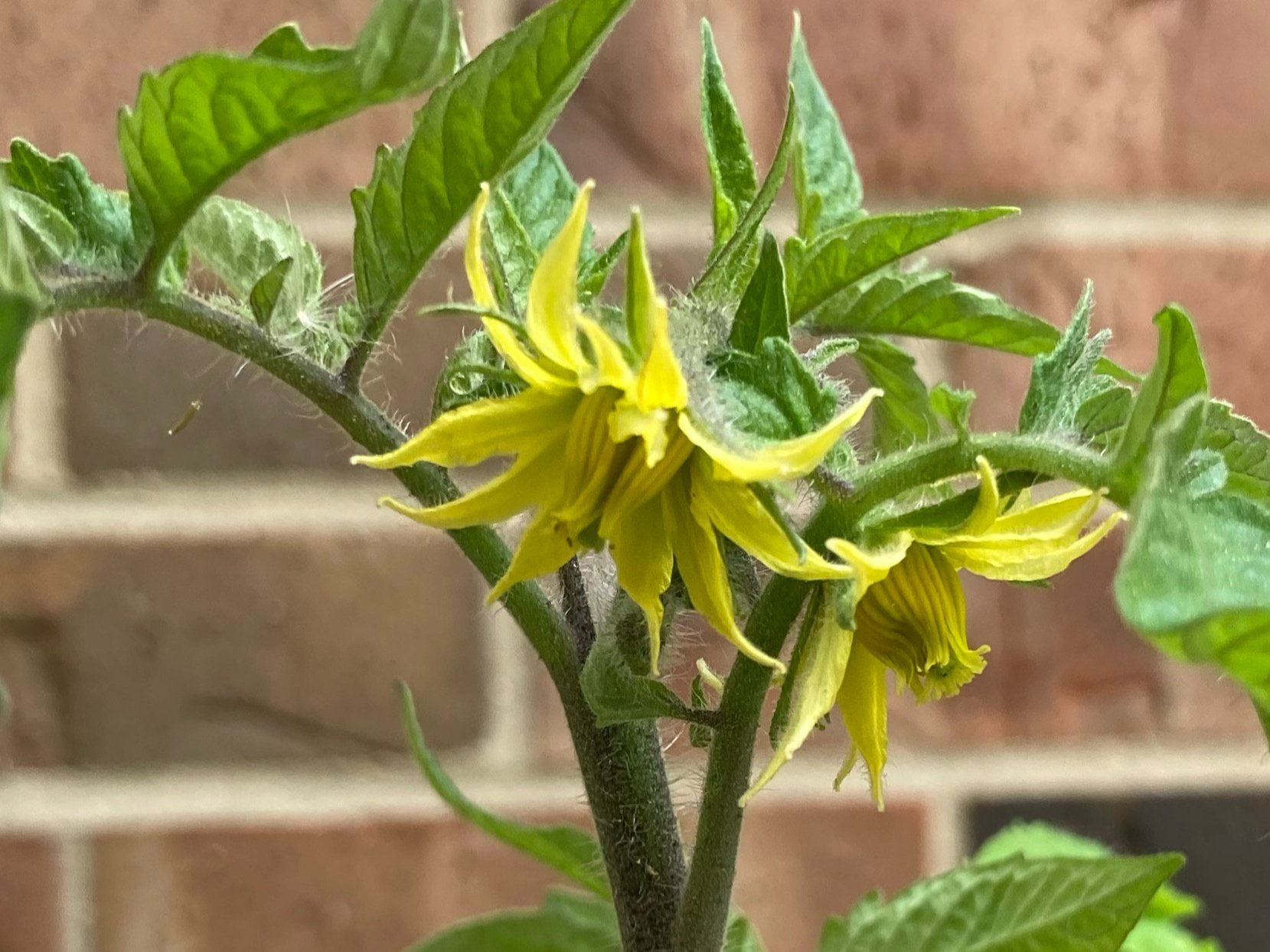Tips for Planting and Growing
Soil
It all starts with good soil filled with abundant nurtiients. For pots, I suggest using a blend of 4 parts potting soil, 1 part sphagnum peat moss, 1 part mushroom compost (not cow manure) and 1 part worm castings. In ground, add everything but the potting soil. Till to aerate to avoid compaction.
Spacing
Tomato plants supported by stakes, cages, towers or a trellis can thrive when 18” apart. Even better: 24” apart. Those distances give each plant ample room to absorb sunlight, water and nutrients in the soil. It also promotes the air circulation needed to keep the leaves drier, reducing the risk of fungal diseases.
Light
Plant tomatoes in the sunniest part of the yard. They need six to eight hours of direct sunlight. The more, the better! They love the sun and typical summer heat – 65° to 85°. Not so much when it’s more than 90°. If it gets that hot, they’ll need watering more often.
Dig Down Deep
Plant them deep. Those white nubbies near the bottom of the main stem are the beginning of roots? They should all be in the ground below the soil surface. For example, a 8” plant should have at least the bottom 3”- 4” below the surface.
Mulching
Mulching prevents weeds and keeps your soil moist. Plastic is great but, well, it’s plastic! Cocoa shells are great, but not around dogs. Grass clippings are good but not if treated with weed killer or grub control – the residue will leach out and into your tomatoes. I prefer straw – cheap, biodegradable and easy to add more as the season progresses.
Watering
Keep the soil moist. It shouldn’t be muddy nor parched . Some dirt crumbs should stick to your fingers when you touch the soil. Water at the base if possible to avoid dripping-wet leaves, which can foment diseases. In late summer when it’s typically drier and temps climb above 90°, water the plants 10-15 minutes at least every other day. Or even more often. It’s best to water in the morning so any water on the leaves will dry rapidly.
Bugs
Planting basil around your tomato plants will help keep away aphids and other nasty pests. Marigolds will also do the trick, but basil tastes a lot better on bruschetta. I avoid chemical sprays of any sort.
Trimming is okay
Don’t be shy about trimming away non-productive branches and branches around the bottom. Pruning promotes:
• Better air circulation
• More sunlight on fruit
• Bigger tomatoes
• More tomatoes
• Disease prevention
When the plant is about 18” tall, get out the clippers (clean them thoroughly with a diluted solution of bleach to kill any nasty bacteria or viruses then soap and water) and snip away.
Pruning #1 - Lower branches
Pruning usually improves the yield for indeterminate tomatoes. This way nutrients go to growing tomatoes, and not just more stems and leaves. Also, gently pruning off any lower branches laying on the ground helps prevent soil-borne diseases from infecting the plant.
Pruning #2 - Suckers
Pinch off the unproductive, secondary branches, aka “suckers.” Get ‘em when they’re little. When they appear right at the junction between the stem and the primary branches. It’s a full-time job in the late summer as your plant grows and grows and grows.
DON’T PRUNE!
Conversely, DO NOT pinch off any tiny branch that’s growing 1”-2” above a primary branch and has drooping pods at the end. Those pods contain flowers that become luscious tomatoes.
Fertilizing
Miracle-Gro Tomato formula and Tomato Tone are both good commercial fertilizers. I prefer the latter. A teaspoon or two near the plant (but not directly on the stem) every two weeks works well. It’s bone meal so don’t use around dogs – they’ll damage a plant digging for it. DO NOT use coffee grounds or cow manure – they’re so acidic they burn the roots.
Staking/Caging
Nearly all tomato plants we sell are indeterminate. That is, they’re vines. Use stakes, cages or towers to keep them upright. This exposes more of the plant to the sun, improves air circulation to enhance pollination and keeps the fruit off the ground, which prevents rot and soil-borne diseases.
Shake It, Shake It, Shake It
Tomato plants are self pollinating. The trick is getting the pollen out of one flower and into another. Give the flowers a gentle, but vigorous shake every day. An electric toothbrush is a great tool to use (really!). When it’s more than 90ª, do it early in the morning or later in the evening when it’s cool enough for the flowers to release their pollen. Also, it works better when the weather is dry and the leaves are, too.
Varmints
Squirrels have an uncanny sense of the precise moment a tomato is ripe. They pounce, take a single bite, then toss each tomato to the ground. If only they’d just take one, eat all of it and leave the rest! The mint, pepper and urine sprays have never worked for me. I wrap netting around the cages to limit the damage from the pesky vermin.
Is It Ripe?
Give it a squeeze! Whether it’s red, orange, green, purple, yellow, black, etc, a fruit will feel firm but not hard, soft but not squishy when it’s ripe. Pick it if it feels like it’s at the very edge of maturity. Better to let it ripen on the counter for a day or two rather than leave it for the squirrels to plunder.
















